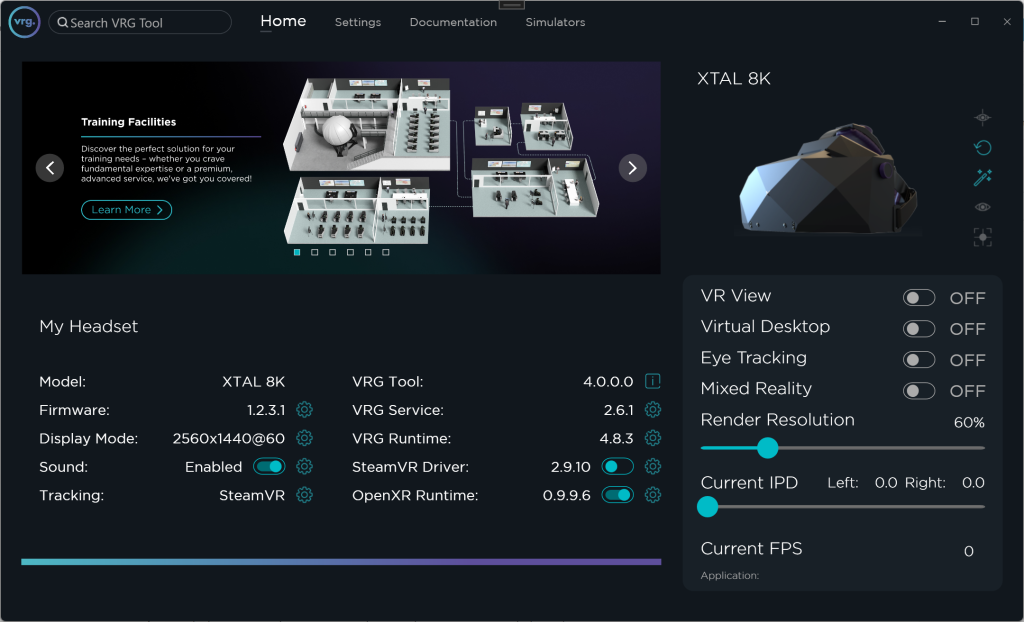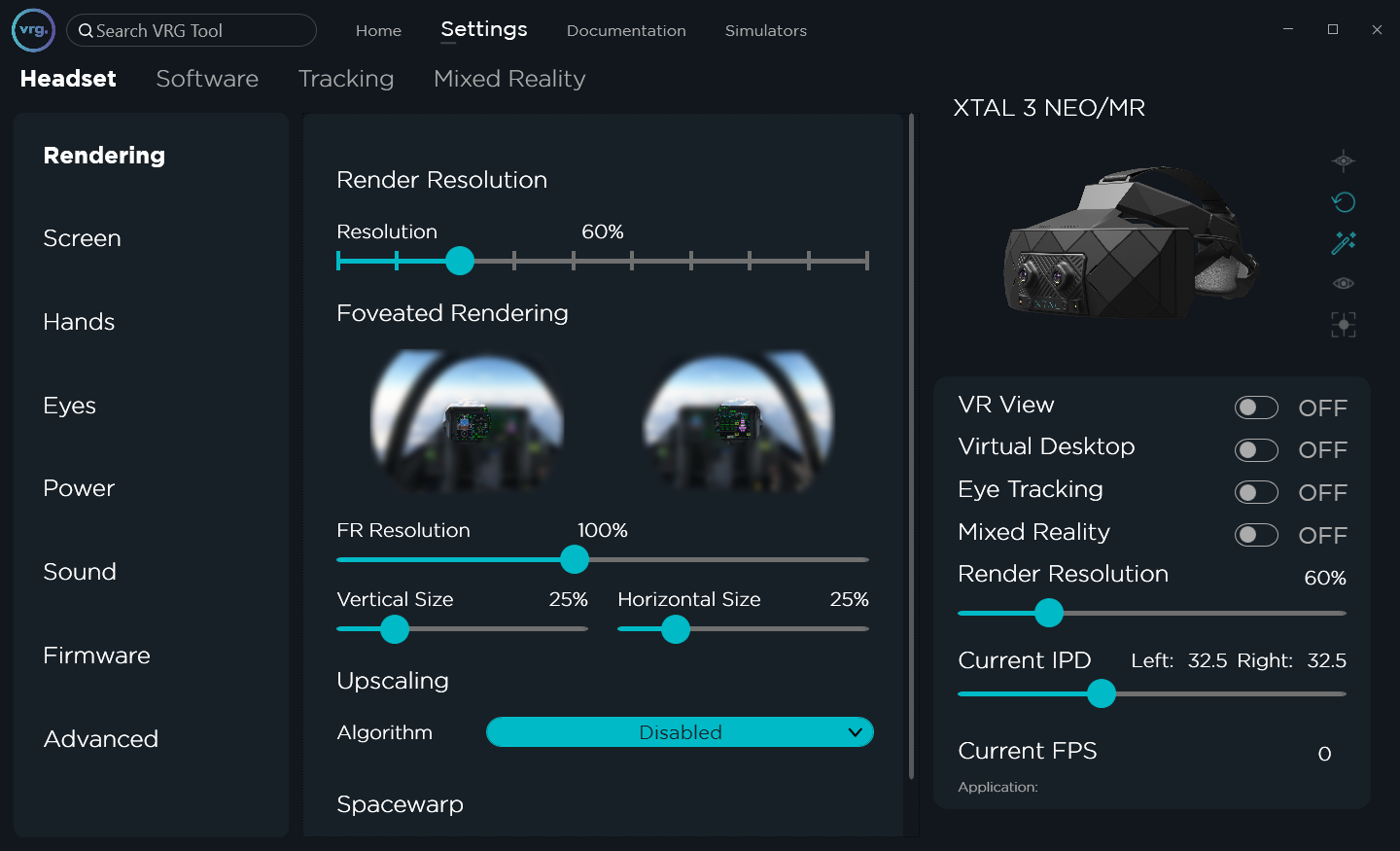Setup
- Start the VR Tool service application
- Install the VRG OpenXR runtime (see OpenXR page for details)
- alternatively you can also run XTAL through SteamVR driver and use SteamVR as OpenXR runtime instead of the custom VRG OpenXR runtime
- Make sure that the VRG Runtime is installed and updated
- Make sure that the OpenXR Runtime is enabled
- We also recommend disabling the SteamVR Driver
- Make sure that you have the correct Tracking option selected
- use ‘IMU’ if you are using the XTAL internal IMU sensor without any additional room-scale tracking
- use ‘SteamVR’ if you are using the Lighthouse/SteamVR tracking system
- Optional (if you are using room-scale Lighthouse/SteamVR tracking system)
- Position the Lighthouse base stations around your tracking space, power them up, and make sure they are synchronized
- Start SteamVR
- Go to Settings – Headset Resolution
- Set the resolution to a value corresponding to the used GPU/CPU and your desired FPS
- for the XTAL 3 and XTAL 8K headsets we recommend using the default 60%
- for the XTAL 5K headset we recommend using higher value (80-100%)
- make sure to disable and reenable the VR mode after changing these settings
- you should test the resolution/FPS changes when the plane cockpit is loaded, as the main MSFS menu will show overall higher FPS than what can be achieved in the full scenario
- Set the resolution to a value corresponding to the used GPU/CPU and your desired FPS
- Start Microsoft Flight Simulator
- Switch to VR mode
- you can use the ‘Enter/Exit VR mode’ button on the bottom of the main MSFS page, or press the corresponding keyboard shortcut (Ctrl+Tab by default)
This page was last modified on April 3rd, 2025 at 17:23
< PreviousNext >


